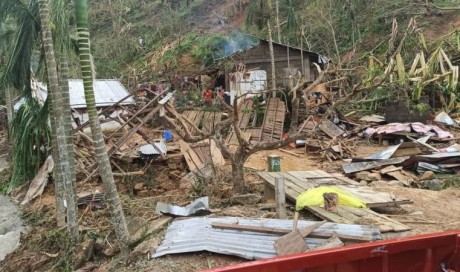The Philippine Institute of Volcanology and Seismology (Phivolcs) said on Monday that it was monitoring Mount Kanlaon in Negros Occidental province after it recorded over 130 earthquakes since Sunday.
The institute issued a statement reminding the public that Kanlaon Volcano remains on alert level 1, "which means that it is at an abnormal condition and has entered a period of unrest", reports Xinhua news agency
"The local government units and the public are strongly reminded that entry into the 4-km radius permanent danger zone must be strictly prohibited due to the further possibilities of sudden and hazardous steam-driven or phreatic eruptions," the institute warned.
The Phivolcs said that it has recorded 136 volcano-tectonic earthquakes—earthquakes caused by the movement of magma beneath the surface of the Earth—on the western flanks during the 24-hour observation period.
It added that four of these earthquakes recorded between 1 a.m. to 2.06 a.m. on Monday were felt in La Carlota City and Bago City in Negros Occidental province and Canlaon City in Negros Oriental province.
"Activity at the vent consisted of moderate emission of white steam-laden plumes that rose 200 meters before drifting southwest," the statement read.
Moreover, the institute said the volcano emitted sulfur dioxide on June 13 and has observed ground deformation, indicating a slight deflation of the lower and mid slopes since January 2020.
"Short-term electronic tilt monitoring on the southeastern flanks recorded continuing deflation on the lower slopes, but inflation on the mid slopes since April 2020. These parameters indicate that hydrothermal or magmatic activity is occurring beneath the edifice.
"Phivolcs would like to assure the public especially the local communities in Negros Island that we are keeping a close watch and shall inform all concerned of any further developments," the institute said in a statement.
On March 11, the institute raised the alert level over Mount Kanlaon.
Mount Kanlaon is the highest point in Negros Island, as well as the whole Visayas region, with an elevation of 2,465 metres above sea level.
In January this year, Taal volcano in Batangas province, south of Manila, erupted, displacing thousands of residents in the province and nearby provinces.
As an active earthquake zone, the Philippines has frequent seismic activity due to its location along the Pacific "Ring of Fire". The Philippine archipelago has at least 24 active volcanoes.
Share This Post















